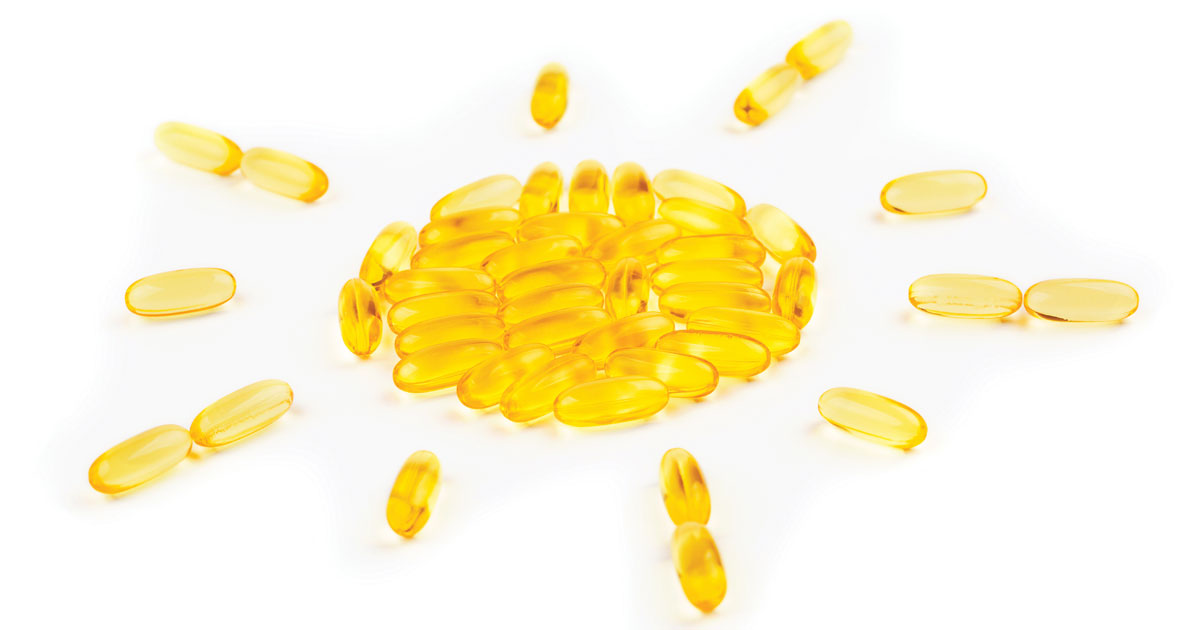Typically, we spend more time indoors in the colder months as we turn up the heat and snuggle up by a warm fire. Some people can meet basic requirements for vitamin D through the sun, but this is often not as true in the colder months. Without the sun, we are not synthesizing vitamin D, which is essential to our health for a variety of reasons.
GET OUTSIDE
Some factors that affect UV radiation are sunscreen, skin pigmentation, smog, cloud cover, location, and length of day. UVB radiation does not penetrate glass, so sitting by a window won’t get you the D you need. You’ll have to go outdoors to get your daily dose of sunshine.
WHEN & HOW LONG TO SOAK UP THE SUN
Since staying out in the sun all day without sun protection can cause burning and can put you at risk for skin cancer, researchers strongly recommend using sunscreen while soaking up the sun. Spending just five to fifteen minutes a day in the sun, at least two to three times a week, provides some basic vitamin D requirements. Early mornings and late afternoons are the best times to be in the sun, and medical professionals often caution against exposure at high noon when the sun is the strongest. Be smart and avoid overexposure.
HEALTH BENEFITS OF “THE SUNSHINE VITAMIN”
Since sunscreen with an SPF of 30 can reduce Vitamin D synthesis by 95%, supplementing with Vitamin D, “The Sunshine Vitamin” is often recommended.
- Vitamin D promotes strong bones and teeth and helps prevent osteoporosis.
- Vitamin D bolsters the immune system and reduces the risk of developing flu and pneumonia.
- Vitamin D is believed to improve blood sugar.
- Vitamin D may improve cognitive function and help prevent dementia.
- Vitamin D helps support a healthy pregnancy.
- Vitamin D may reduce the risk of diabetes.
- Vitamin D can help prevent some forms of cancer and might significantly reduce the risk of breast cancer.
VITAMIN D IN FOODS
Vitamin D is available in two forms: D-2 (ergocalciferol) and D-3 (cholecalciferol). D-3 is the natural form created in the body in response to sunshine and may provide more benefits than D-2, a synthetic version made in a lab.
Vitamin D is not found in many foods, so supplementing in capsule or liquid form may be helpful. For those wanting to get more vitamin D through their diet, the best sources of vitamin D include fatty fish, including tuna, salmon, and mackerel, as well as fish liver oils. Vitamin D is also found in egg yolks, beef liver, and cheese. Fortified milk, orange juice, and yogurt can also contain vitamin D.
D IS FOR DEFICIENCY – NOT ENOUGH D?
Opinions about optimal levels of vitamin D vary widely, but health care professionals estimate that 40% to 50% of Americans may be deficient in vitamin D. Without sufficient vitamin D, people can get sick more often, risk bone fractures, and become tired, fatigued, and depressed.
Guidelines for recommended dietary allowance (RDA) of vitamin D have recently been raised to 600 international units (IU) for everyone between the ages of 1 to 70 and to 800 IU for those over the age of 70.
Many health care providers recommend the 25-hydroxy vitamin D blood test to measure your vitamin D level. Any result lower than 20 ng/mL indicates a vitamin D deficiency. Levels between 20 to 30 ng/mL are considered sufficient by RDA standards, but many providers prefer an optimal range somewhere between 30 to 50 ng/mL.
DAMAGE WITH VITAMIN D – TOO MUCH D?
Too much can be a bad thing, so don’t overdo your vitamin D intake! Vitamin D toxicity can lead to weight loss, anorexia, and heart arrhythmias. Damage may be done to the blood vessels, heart, and kidneys with an increased risk of developing kidney stones. Vitamin D levels above 100 ng/mL are thought to be too high.
Get healthier today and live better and longer by getting enough vitamin D. Soak up that sun in small amounts, eat vitamin D-rich foods, and take your vitamin D supplements regularly. Request that your doctor check your vitamin D level to see where you are and go from there.






















